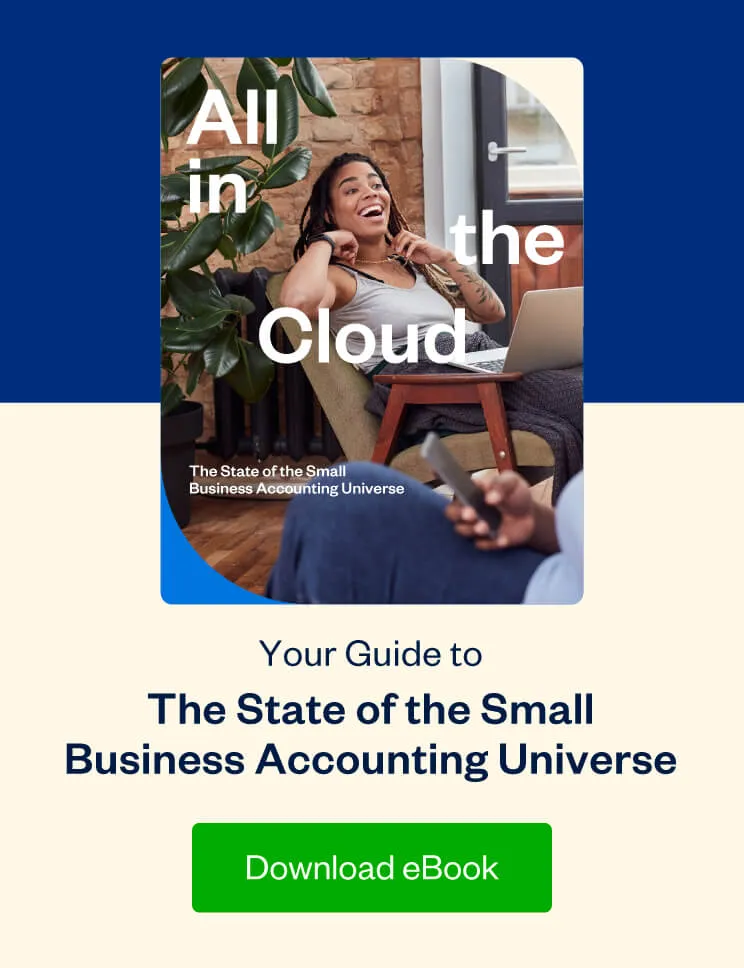Every business owner needs bank reconciliation in their arsenal of skills. Here’s why, plus a step-by-step guide to doing one yourself.

When you’re a small business owner, writing checks, receiving and making payments, and then recording these transactions is a regular part of your work day.
But say you receive your monthly bank statement and discover it doesn’t match your cash balances. The bank debited your account for items you have no knowledge of, and some of the transactions you recorded last month are showing up in this month’s statement. So what’s a business owner to do?
These situations and more can be resolved with a process called bank reconciliation. Here, we’ll explain what it is, why all businesses need it, and how to do it in 3 easy steps.
Table of Contents
What Are Bank Reconciliations?
Businesses use bank reconciliation (or bank rec, as it’s sometimes called) to make sure their financial records are accurate. You compare your business transactions against your company’s bank account statements to look for discrepancies between the two. If there are any, you account for them and adjust your books accordingly.
Most discrepancies occur because of bank service fees, clerical mistakes, or timing differences—say, for example, when you write a check and record it in your books at the end of the month, but your bank processes it the following month.
Companies traditionally use this tool to make sure the cash balances recorded in their books match up with the money they have in their accounts. This allows them to see how much money they have available for their operations and investments.
This process shouldn’t be limited to just your bank transactions, though. To account for every dollar that goes through your business, you should also do bank reconciliations for any other account that holds funds for your company, such as your business credit cards or PayPal account.
4 Reasons Why Your Business Needs Bank Reconciliation
1. Track Cash Flow
The amount of money your business has at any given time has a huge impact on the decisions you make and how you use your available funds. When you do bank reconciliations regularly, you’ll be able to see how money enters and leaves your business, so you can pinpoint cash flow problems and take appropriate action.
Say your business sends out dozens of invoices every month. It can be easy to lose track of an unpaid invoice or 2 in the hustle of your day-to-day life. But doing your bank reconciliation at the end of the month will remind you to follow up on the overdue payments, so you get paid for the work you performed.
2. Understand How Your Business is Performing
Many business owners use a combination of accounts to manage their business finances. In addition to the transactions you conduct as part of your daily operations, some accounts may give you interest income or charge service fees—all of which you also need to account for. Bank reconciliation offers an accurate look at your financials across all your accounts, so you know exactly where your business stands at any moment.
An accurate record of your business performance is also needed for tax returns and financial audits. Do bank reconciliations regularly and often, and you’ll always have this information ready to go.
3. Catch Accounting and Bank Errors
Bank reconciliation also ensures accuracy and consistency in your financial records.
Compared to a business’s accounting records, which can be subject to clerical errors, bank statements are incredibly accurate. And in the off chance your bank does make a mistake, bank reconciliation will help you find it.
This process aims to catch both kinds of mistakes by comparing your business records against the bank’s own record of your transactions. By doing so, you also prevent errors from transferring over to your financial statements—which can wreak havoc on your ability to make informed decisions about your business.
4. Protect Against Fraud and Lost Revenue
You may not be able to stop fraud completely, but regularly reviewing your expenses can help catch fraudulent activity before it causes lasting damage to your business. It can also help you discover that a vendor tampered with a check you gave them, for instance, or that you still got billed for a subscription after you canceled it.
Bank reconciliation can prevent you from losing revenue to fraud—or at the very least, give you one less thing to worry about in your business.
How to Do a Bank Reconciliation
Bank reconciliation requires you to inspect your financial records, line by line, to discover discrepancies. However, the sheer number of transactions recorded by a business can often make this process difficult and time-consuming—especially if you have to go several months back into your books to figure out an error.
This is why conducting this process at least once a month actually minimizes the amount of work you need to do. Businesses that oversee dozens or even hundreds of transactions on a regular basis (or those that handle cash payments) may do bank reconciliations weekly or even daily.
The most important thing here, though, is that you reconcile your bank statements regularly and consistently. Pushing this task off for a few months makes it that much harder to get back into it—and you lose the benefits that come with tracking your cash flow too.
With all this in mind, let’s look at the bank reconciliation process you’d follow for your business.
Compare Your Financial Statements
Gather the bank statements for the period you’re doing a bank reconciliation for, as well as a record of your business accounts for that same period. Find the closing balance for that month in those documents.
If they don’t match up (and they usually don’t), you’ll compare the records to find the transactions that account for the difference. In addition to discrepancies between the dates you record transactions and when the bank processes them, the following items often account for differences between the two:
- Bank fees
- Service charges
- Interest payments
- Outstanding checks
- Deposits in transit
Let’s assume you’ve balanced your cash book for March, and the balance is $1,300 as of March 31st. A week later, you receive your monthly statement with a balance of $1,500. There’s a discrepancy of $200 that you need to reconcile.
Mark the items that appear in both the bank statement and cash book. Now turn your attention to the unmarked items in your cash book and bank statement. You find the following unmarked items in the cash book:
- $30 check payment to a supplier
- $20 check payment to a supplier
You also find the following unmarked item in your bank statement:
- Receipt of $150 (a payment made from a client)
Adjust the Balances
Use the unmarked items you find to adjust the balance in your company records, so they reflect the amount of cash you actually have. Start by adding to your book balance any outstanding deposits or withdrawals that haven’t been processed yet, then factor in any fees, penalties, or earned interest.
Using the example above, you’ll now need to update your cash book with the $150 client payment and increase receipts by $150. This is because you’ve received this money as reflected in your bank statement but have yet to record it in your cash book.
After adding the $150 to your $1,300 cash balance, your new balance comes out to $1,450.
Now, take the bank statement balance of $1,500 and deduct it by $50 to account for the check payments you made to your vendors. Your bank hasn’t recorded and deducted these amounts from your bank statement yet, which is why the bank statement’s balance is higher than the one in your books.
When you’re finished with this step, the new balances in your books and bank account should match. Your adjusted bank balance in this example comes out to $1,450—the same as your adjusted cash book balance.
Record the Reconciliation
Now you need to create a record for your company’s books explaining why your bank statements and books didn’t match up. You won’t need to make any changes to your bank account balance because the number will automatically update as your outstanding transactions get processed.
There are 2 ways you can record your findings: By creating a journal entry in your general ledger or by creating a bank reconciliation statement. The method you choose ultimately depends on what your business needs and your preferences.
How to Create a Journal Entry
A journal entry is a record of 1 or more business transactions in an accounting system. It’s a quick and easy way to capture the information you learned from your bank rec.
If you use a manual system or Excel spreadsheet to complete your accounting, a handwritten or typed note explaining the adjustments will do.
Simply go to the end of the bank reconciliation period in your books and briefly note the cash book and bank statement balances, as well as the discrepancies you found between the 2 records. Include the type of discrepancy you found and the total amount for each category. For example:
- $500 total in outstanding deposits
- $15 in outstanding fees and withdrawals
If you use accounting software, on the other hand, you’ll likely have the ability to reconcile your bank statements directly in the platform.
How to Prepare a Bank Reconciliation Statement
Bank reconciliation statements outline the outstanding transactions you found and the adjustments you made to your books during the bank rec process. It’s an expanded version of the bank rec journal entry, with details about each unaccounted-for transaction instead of combining the totals of each kind of transaction.
List out all of the deposits, withdrawals, and other transactions that caused the discrepancy in your records. Also make sure to include information such as the date, amount, and payer for each transaction.
If you’re doing this on paper or in an Excel spreadsheet, you may find it helpful to download a bank reconciliation statement template online to use as a foundation for your own.
Simplify the Bank Reconciliation Procedure with Accounting Software
As we’ve seen, bank reconciliation offers many worthwhile benefits. It may not be the most exciting task to do in your business, though, and you might even be wishing there was an easier way to do this.
Well, we’re happy to offer a solution. Most modern accounting software allows you to do bank reconciliations in the platform, which helps to speed up the process and take out as much of the manual labor as possible.
FreshBooks, for example, allows you to connect your business bank accounts and credit cards to the platform so it can get access to your bank’s financial records. When you use the Bank Reconciliation feature, you can compare the transactions you recorded in your FreshBooks account to the ones received from your bank side by side on your screen—no need to move back and forth between different documents.
FreshBooks’s Bank Reconciliation is available on Plus, Premium, and Select plans, as well as on the 30-day free trial. Give it a try today to see how easy bank rec is with accounting software made for small business owners.
This post was updated in February 2023.

Written by Feli Oliveros, Freelance Contributor
Posted on February 10, 2023

 Why Professional Organizer Jennifer Recommends FreshBooks to Her Clients
Why Professional Organizer Jennifer Recommends FreshBooks to Her Clients The 6 Most Common Accounting Mistakes That Put Your Business at Risk
The 6 Most Common Accounting Mistakes That Put Your Business at Risk Better Budget Management: How to Stick to a Budget
Better Budget Management: How to Stick to a Budget





